28-08-2024
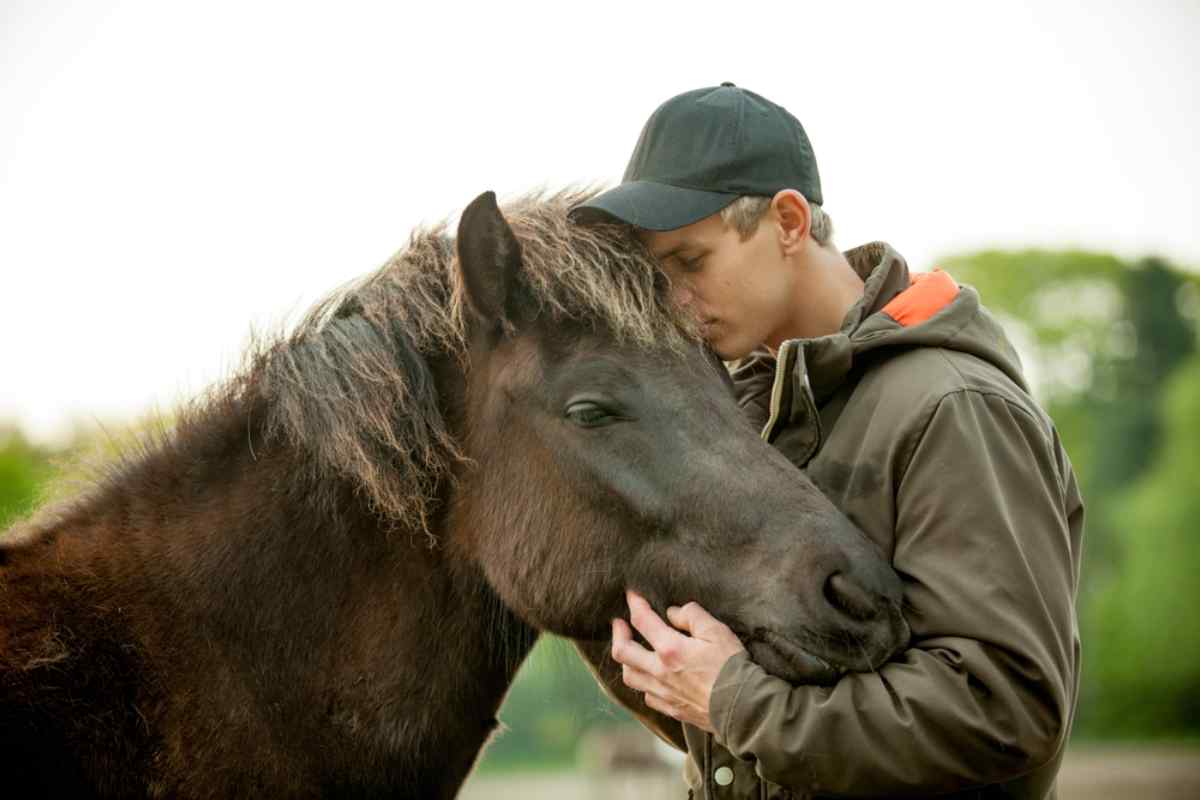
Did you know there are millions of puffins here every summer? Cool right? Iceland's animals are as weird as the landscape itself, with volcanoes, glaciers, and endless coastlines.
The extreme geography and ever changing climate means long dark winters and short bright summers, perfect conditions for all sorts of crazy animals. From the Arctic fox, the only land mammal here, to the whales that swim by the shore, Iceland's animals have adapted in amazing ways to live here.
As we dive in, you'll see how they live here and why Iceland's ecosystem is like nowhere else. Whether you're a nature nut or just curious, there's so much to learn about Iceland's wildlife.
There are not many animals native to Iceland, as it was cut off from other landmasses for thousands of years. But the ones that did make it here have evolved in amazing ways to survive.
The Arctic fox is one of the coolest animals in Iceland. It's the only land mammal here and arrived here during the last Ice Age, around 10,000 years ago. These little guys have adapted amazingly to Iceland's harsh conditions. Their thick double layered coat changes color with the seasons: white in the winter to blend in with the snow and brown in the summer to match the rocky landscape.
Arctic foxes prefer to live in remote areas like the highlands and coastal regions, where they mainly eat birds, eggs, and carrion. They also scavenge leftovers from wherever they can and hunt small mammals when they can. One of their funniest behaviors is to leap into the snow to catch prey hidden underneath.
If you want to see these amazing animals up close, the Hornstrandir Nature Reserve and the Arctic Fox Center in Súðavík are the places to go. Here, you can learn about their ecology and the conservation efforts to protect them. Although globally classified as 'Least Concern,' the Arctic fox population in Iceland has fluctuated due to hunting and habitat changes. However, conservation efforts have helped to stabilize the numbers, and there are estimated to be around 10,000 Arctic foxes in Iceland today.
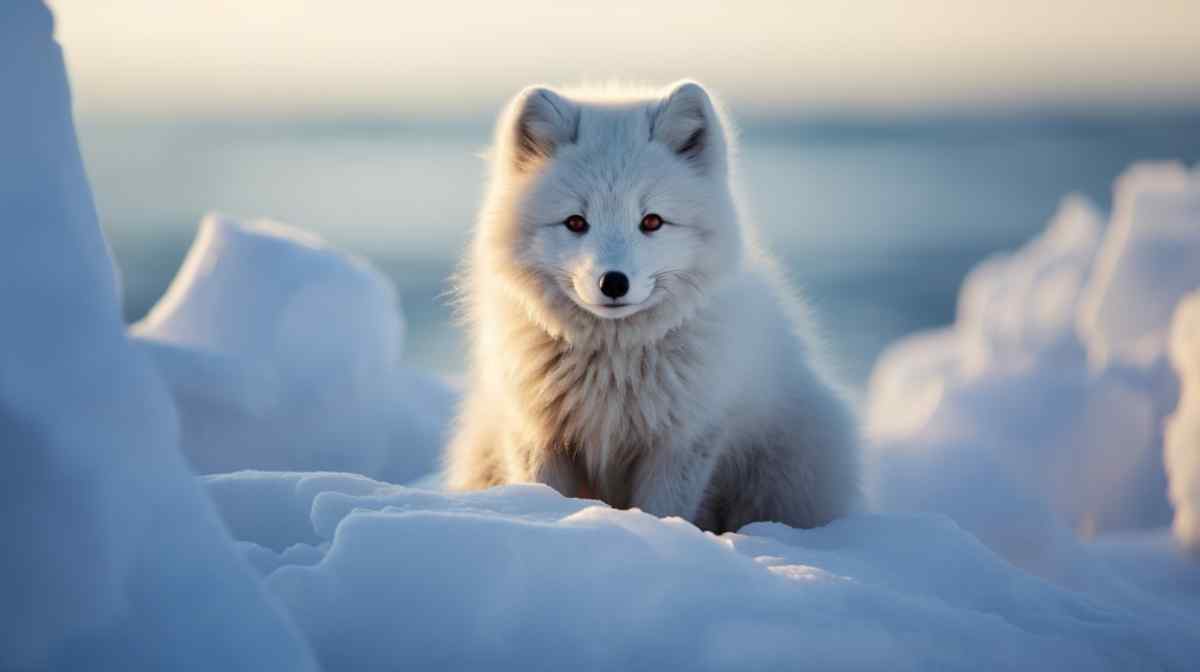
Did you know there are over 400 bird species in Iceland? That's a lot of birds if you ask us! The island's diverse landscape, cliffs, wetlands, and geothermal areas provide the perfect habitat for many migratory birds and breeding colonies. Here are a few we think you should see:
Puffins, specifically the Atlantic puffin, are one of the most iconic animals of Iceland. These cute little seabirds are famous for their bright beaks and playful nature. They arrive in Iceland from late April to early May and flock to the coastal cliffs and offshore islands for the breeding season. They form large colonies, dig burrows up to a meter deep, and lay a single egg.
Both parents share incubation duties, and the egg takes 39-45 days to hatch. Once the chicks hatch, they are called 'pufflings,' cute, right? Iceland has an estimated 8-10 million puffins, making it one of the most important breeding grounds for this species. If you want to see puffins in the wild, some of the best places in Iceland are the Westman Islands, home to the world's largest puffin colony, which has over a million birds.
Dyrhólaey on the south coast and Látrabjarg in the Westfjords are also great places to see them up close. Guided tours to places like Papey Island and Ingólfshöfði will give you even more opportunities to see puffins in their natural habitat. Although puffins are not endangered in Iceland, they face challenges due to climate change and food scarcity. Conservation efforts are being made to protect their habitats so we can all keep enjoying these amazing birds.
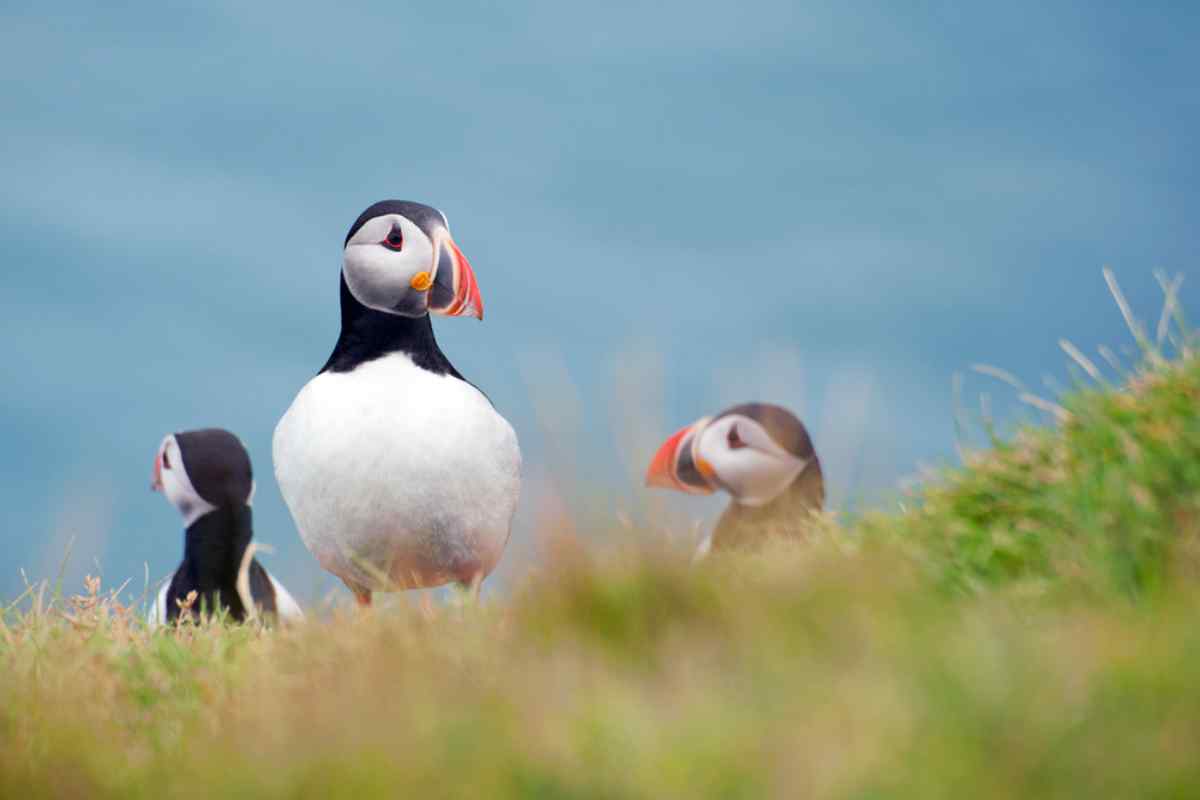
The Gyrfalcon is revered as the national animal of Iceland, and it's easy to see why. This magnificent bird, the largest falcon species in the world, embodies power, strength, and freedom—qualities deeply embedded in Icelandic culture and heritage. With a wingspan ranging from 111 to 128 centimeters (44-50 inches) and a body length of up to 60 centimeters (24 inches), the Gyrfalcon is an impressive sight. Gyrfalcons in Iceland typically have darker plumage compared to their lighter-colored relatives in Greenland.
Females are notably larger than males, a unique trait among raptors, adding to their commanding presence. These birds thrive in Iceland's remote and rugged highlands, where they nest on cliffs and rocky outcrops, taking full advantage of the island's rugged terrain. Their diet mainly consists of birds like ptarmigans and seabirds, abundant in Iceland's coastal areas. However, Gyrfalcons are also skilled hunters of small mammals and waterfowl.
Historically, these falcons were highly prized, with only royalty permitted to own them in medieval Europe. Norwegian kings even gifted the rare, light-colored Gyrfalcons to English royalty during the 12th and 13th centuries. In Iceland, the Gyrfalcon is more than just a bird; it's a symbol of the nation's resilience and spirit, appearing in folklore, poetry, and even on the country's currency and coat of arms.
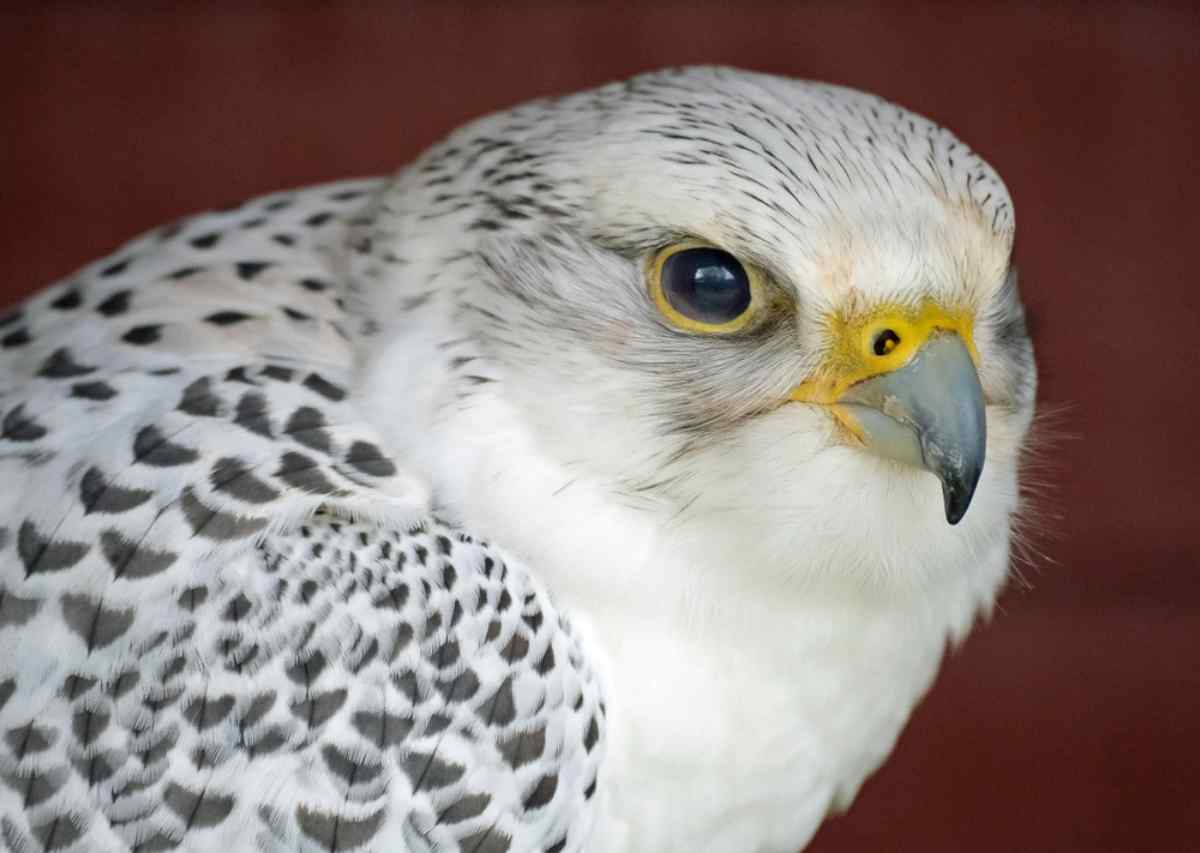
The Arctic tern is one of Iceland's most amazing animals, with its crazy migration and nesting habits. This little bird is the champion of all birds when it comes to migration, traveling 44,000 to 59,000 miles (70,000 to 95,000 km) every year. Arctic terns breed in the Arctic and sub-Arctic, including Iceland, during the summer and then head to the Southern Ocean near Antarctica for the winter.
Their migration is a two-part process: the southbound journey starts in late August and takes 90 days, and the northbound journey in the spring is faster, 60 days. In Iceland, Arctic terns nest in coastal areas, beaches, and islands, digging small holes in the ground to lay their eggs. The nests are vulnerable to predators like Arctic foxes, so they often choose more secluded spots.
During the breeding season, Arctic terns defend their nesting sites fiercely, diving at any intruders to protect their young. With their black caps and slender bodies, Arctic terns are a sight to see in Iceland. They have a wingspan of 75-80 cm (30-31 inches) and weigh 90-120 grams (3.2-4.2 oz). They feed on small fish and crustaceans, using plunge diving to catch their prey. Some Arctic terns live up to 34 years, traveling an incredible distance in their lifetime, equivalent to several trips to the moon.
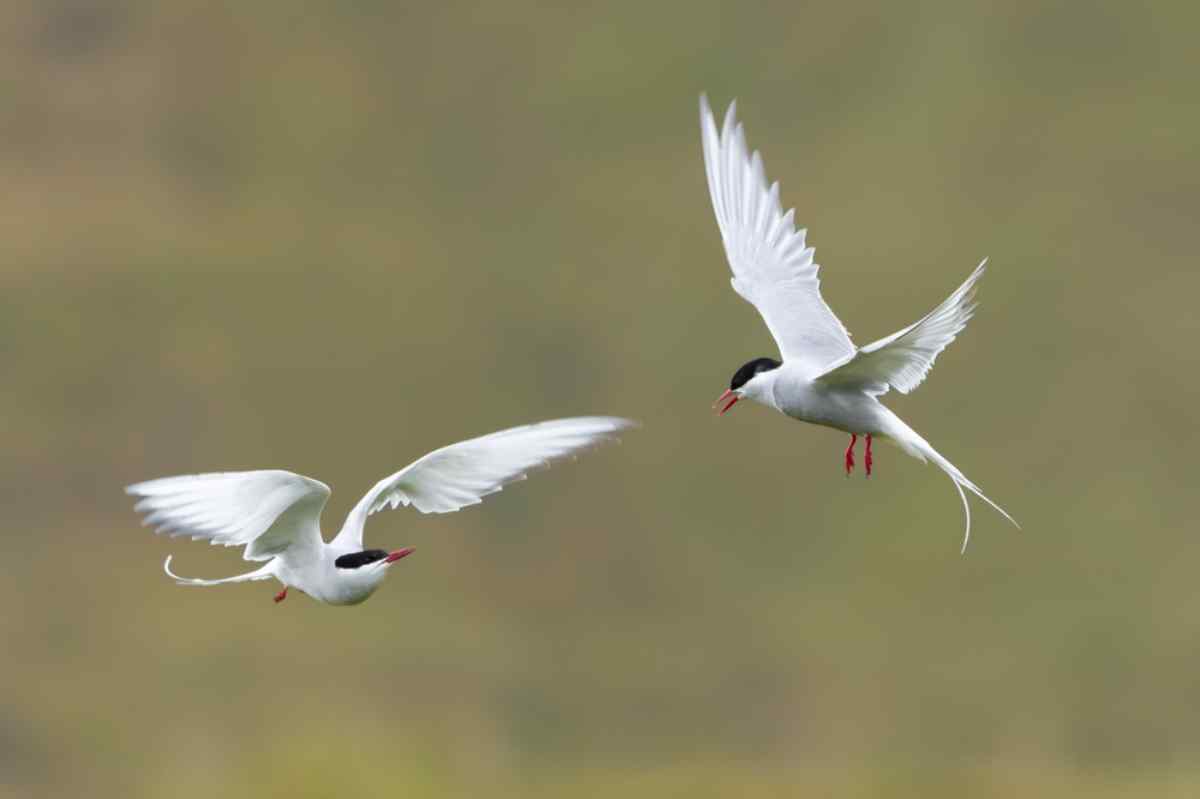
The White-tailed Eagle, also known as the sea eagle, plays a crucial role in Iceland's natural landscape. As the largest bird of prey in the region, it commands attention with a wingspan ranging from 178 to 245 centimeters (5.8 to 8.2 feet). These majestic birds are notable for their impressive size, with females generally larger than males. Adult eagles are easily identified by their brown plumage, whitetails, and vivid yellow beaks, while juveniles sport darker feathers and lack distinctive white tails, helping them blend more seamlessly into their surroundings.
These eagles favor Iceland's coastal regions, especially in areas like Breiðfjörður and the Westfjords. They are naturally attracted to environments near water, such as lakes, rivers, and coastal zones, where hunting opportunities are abundant. Although fish make up the majority of their diet, White-tailed Eagles are opportunistic hunters, preying on small mammals and birds and even scavenging on carrion when necessary.
The story of the White-tailed Eagle in Iceland is one of resilience and resurgence. By the 1960s, their population had plummeted to just 20 breeding pairs, mainly due to hunting and habitat loss. However, thanks to focused conservation efforts, their numbers have rebounded to approximately 250 pairs today. This recovery highlights the significance of preserving Iceland's animals and their environments.
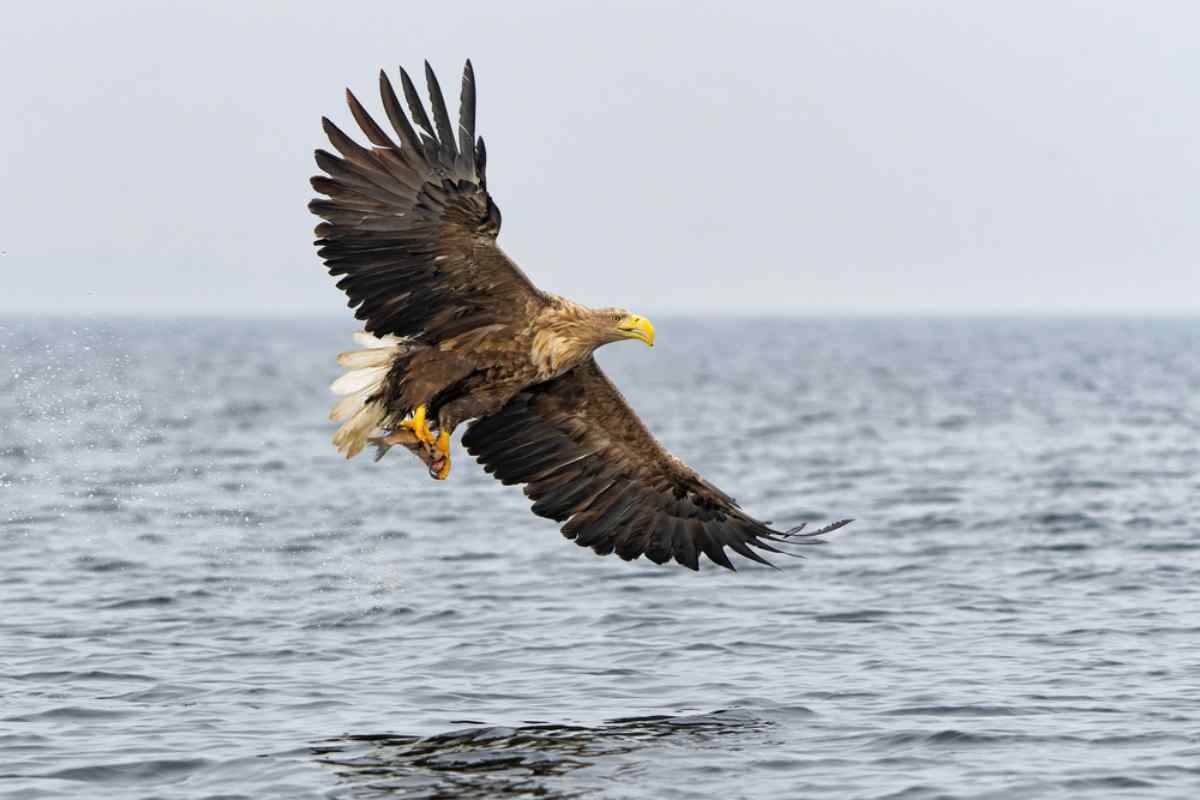
Iceland hosts 15 different kinds of duck species, each well-suited to the island's subarctic environment and coastal regions. The Mallard is the most common, easily recognized by the male's striking green head, white collar, and brown body. These ducks are highly adaptable and can be found in a wide range of wetland habitats, including ponds, lakes, and even coastal areas. Their ability to thrive alongside humans has made them a familiar sight across Iceland.
The Eider Duck is another significant species in Iceland, particularly valued for the eiderdown collected from their nests. This soft, insulating down has been used in bedding and clothing for centuries, providing warmth in the harsh Icelandic climate. Researchers at the University of Iceland are closely studying these ducks, focusing on their population dynamics, nesting success, and loyalty to breeding sites.
Other ducks that inhabit Iceland include the Common Merganser, known for its sharp, serrated bill perfect for catching fish; the Northern Shoveler, with its distinctive spoon-shaped bill; and the Gadwall, a more subtle gray duck that blends easily into its surroundings. If you are looking to see some of these duck species, then we recommend you head out to Lake Myvatn, which is a hotspot for a wide range of bird species in Iceland.
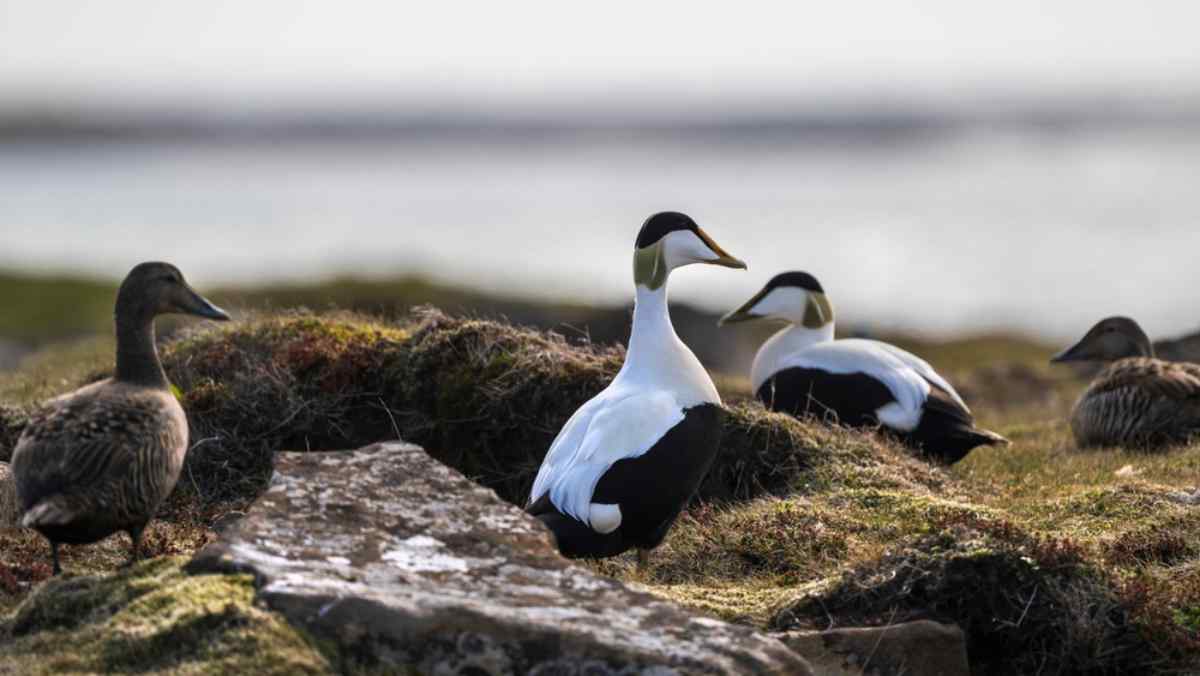
The waters around Iceland are teeming with marine life. Our island's location, surrounded by the cold, nutrient-rich waters of the Atlantic Ocean and Arctic Sea, creates a perfect environment for diverse marine ecosystems. Here are some of the amazing animals you can find in Iceland's oceans.
We are a top destination for observing marine animals in Iceland, particularly marine species. The island's unique position at the convergence of the Arctic and Atlantic Oceans creates a rich marine environment, making it a prime location for whale watching in Iceland. Here's what you can expect to spot on a whale-watching tour:
The prime whale-watching season in Iceland spans from April to October, with peak sightings occurring between June and August. Popular destinations for tours include Reykjavík, Húsavík, Akureyri, and Dalvík, where excursions typically last between 2 to 3 hours. Iceland's whale-watching industry is committed to sustainable practices aimed at reducing the impact on whales and their habitats.
Tour operators adhere to guidelines that ensure a safe distance from the whales, minimize disturbance to their natural behaviors, and limit the number of boats in any given area. Additionally, many companies donate a portion of their profits to conservation initiatives and research efforts.
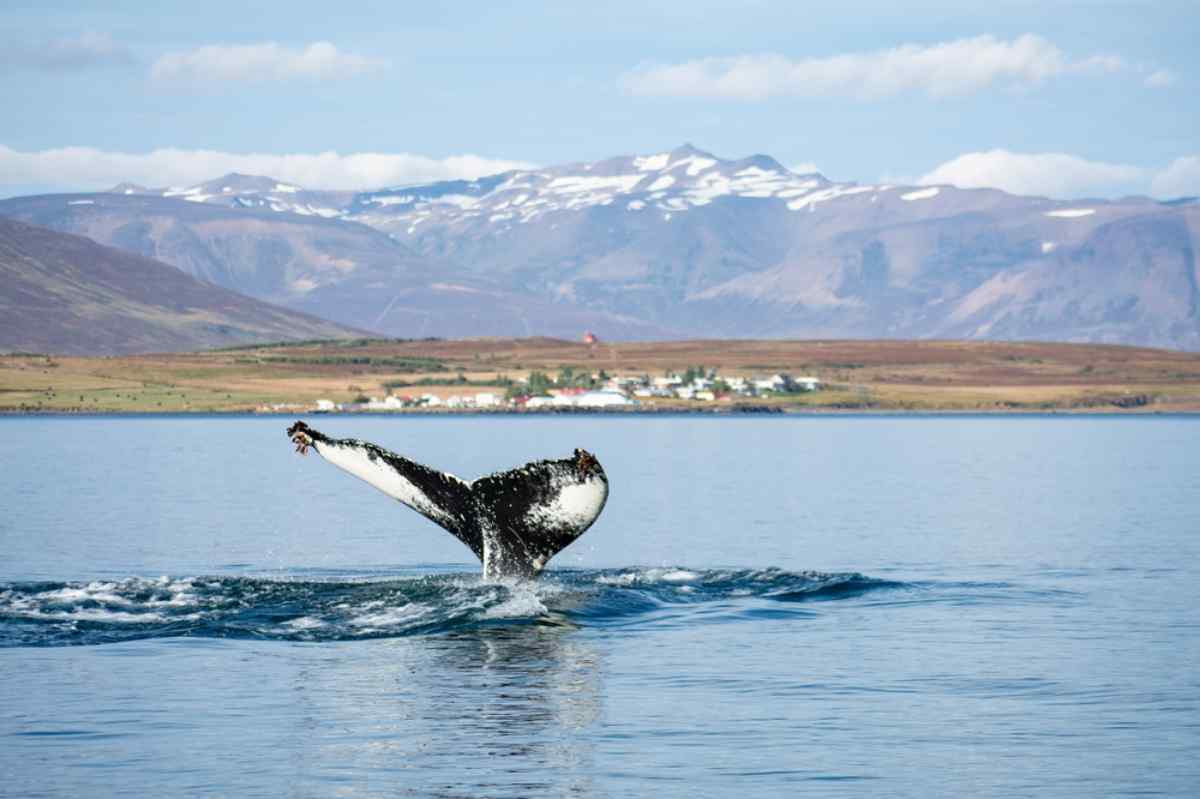
Iceland is home to two main seal species: the harbor seal and the gray seal, both of which are fascinating examples of Iceland's animals. You can spot these marine mammals in various locations around the island, but some areas are particularly known for reliable sightings. Harbor seals are the more common of the two and are often seen lounging on sandy beaches, where they enjoy basking in the sun.
They're curious by nature and may let you get relatively close, though it's always best to keep a safe distance of at least 15 meters (49 feet) to avoid disturbing them. Gray seals, on the other hand, prefer rocky shores and are noticeably larger, sometimes weighing up to 300 kg (661 lbs). Both species spend a lot of time in the water, hunting for fish, cephalopods, and crustaceans.
The best time to spot seals is during low tide when they come ashore to rest. Unfortunately, the conservation status of these seals has become a concern. The harbor seal population, in particular, has seen a significant decline, dropping from about 10,000 in 2003 to roughly 7,652 in 2016. Contributing factors include hunting, habitat loss, and environmental changes. In 2019, harbor seals received legal protection in Iceland, though limited hunting for traditional purposes is still allowed.
For seal watching, the Vatnsnes Peninsula in North Iceland is a top spot, with year-round sightings at places like Svalbarðshreppur, Illugastaðir, and the beach near the Hvítserkur rock formation. Another great location is Jökulsárlón Glacier Lagoon, where you can often see seals swimming among the icebergs or resting on the shore of Diamond Beach.
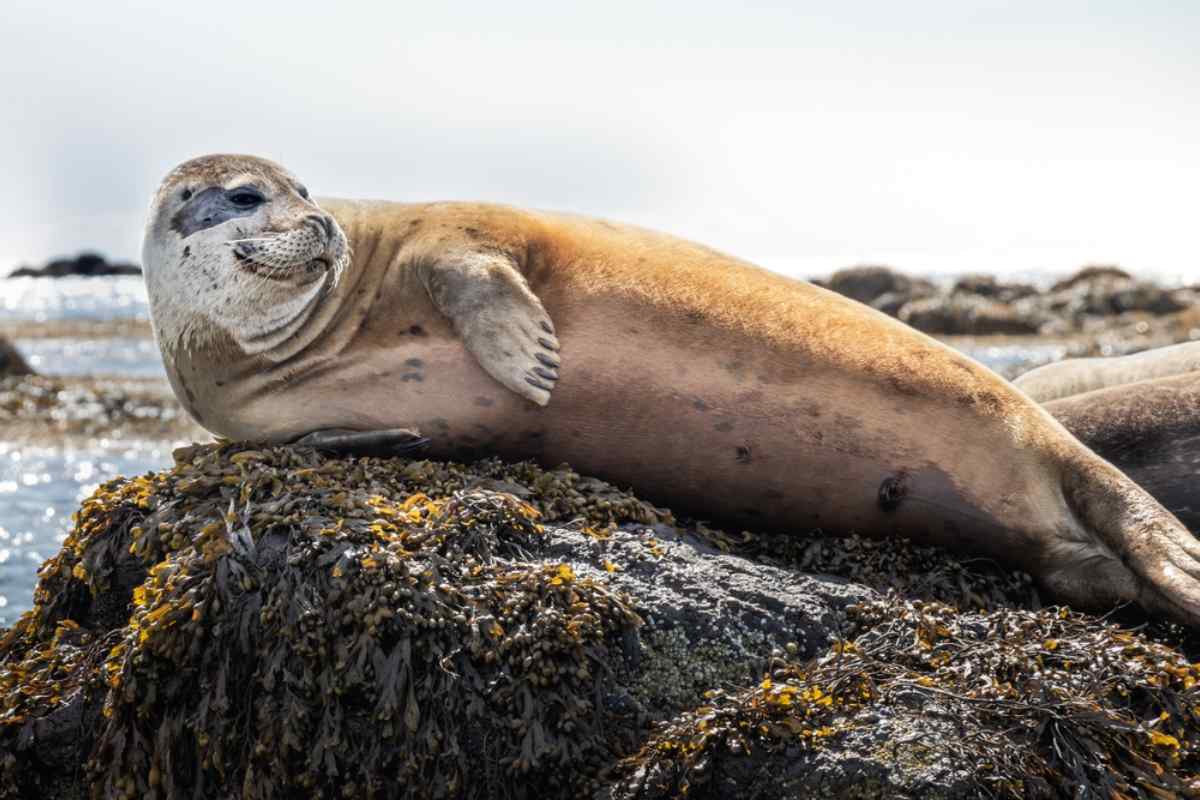
The Greenland shark is one of the most fascinating and rare Iceland animals, thriving in the cold, deep waters surrounding the island. These giants of the sea can grow up to 7 meters (23 feet) long and weigh over 1,000 kg (2,200 pounds), making them one of the largest shark species. What truly sets them apart, though, is their incredible lifespan. Some Greenland sharks are believed to live between 250 and 500 years, making them the longest-living vertebrates on the planet.
These elusive creatures prefer the deep, cold waters, typically found at depths of 200 to 2,200 meters (656 to 7,218 feet). Greenland sharks are opportunistic feeders with a varied diet that includes fish and seals. Despite their slow swimming speed, which averages less than 3 km/h (1.9 mph), they are effective ambush predators, often catching seals while they sleep.
Conservation efforts for Greenland sharks are crucial, as they face threats from bycatch in commercial fishing and the ongoing impacts of climate change. Classified as 'Vulnerable' by the IUCN, these sharks have a slow reproductive rate, and limited data on their populations makes it clear that ongoing research and protective measures are essential to their survival in Icelandic waters. Interestingly, some Icelanders also prepare and eat fermented Greenland shark, a traditional Icelandic dish known as hákarl, despite its strong taste and smell.
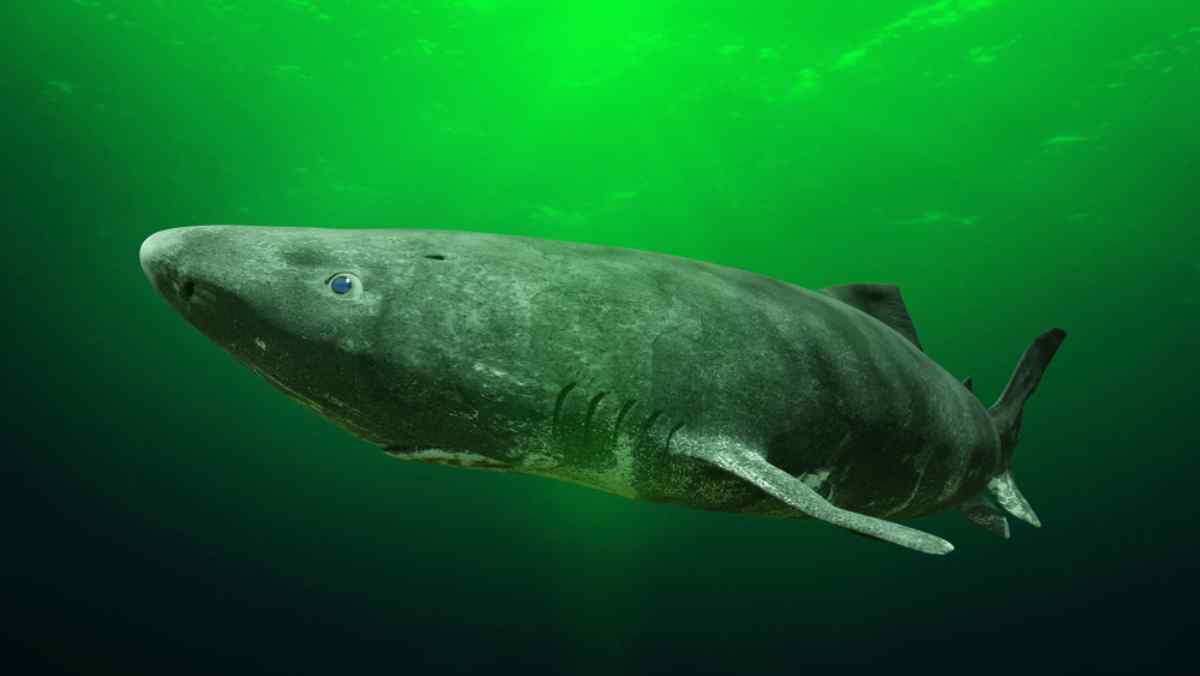
You might be wondering what animals are in Iceland that are not native to the island. Iceland's unique and isolated environment has kept its flora and fauna relatively untouched for centuries, but in recent years, we humans have introduced a few other species as well. Here is the inside scoop on animals that have made their way to Iceland through our influence.
Reindeer are a unique part of Icelandic fauna, though they aren't originally native to the island. They were introduced from Norway in the late 18th century, around 1770, as a response to a dramatic decline in the sheep population caused by disease. Initially, reindeer were brought to four different regions of Iceland, but only the herd in East Iceland managed to survive.
The harsh volcanic landscape elsewhere proved too challenging. Today, the reindeer population in Iceland is estimated to be around 5,000 to 7,000 animals, primarily inhabiting the eastern fjords and highlands. If you're hoping to catch a glimpse of these majestic creatures, East Iceland is the place to go, especially in areas like Vatnajökull National Park and the surrounding highlands.
The best time for viewing is during the summer when the reindeer are foraging in the highlands or in winter when they move down to lower valleys in search of warmer grazing areas. Reindeer play a significant role in Iceland's ecology as the largest wild herbivores on the island. Their grazing habits, especially their preference for lichen, can shape vegetation patterns.
However, with no natural predators, their population is managed through controlled hunting. Each year, about 1,200 to 1,300 hunting permits are issued to prevent overgrazing and maintain ecological balance, ensuring that Iceland's delicate ecosystems, along with its reindeer, continue to thrive.
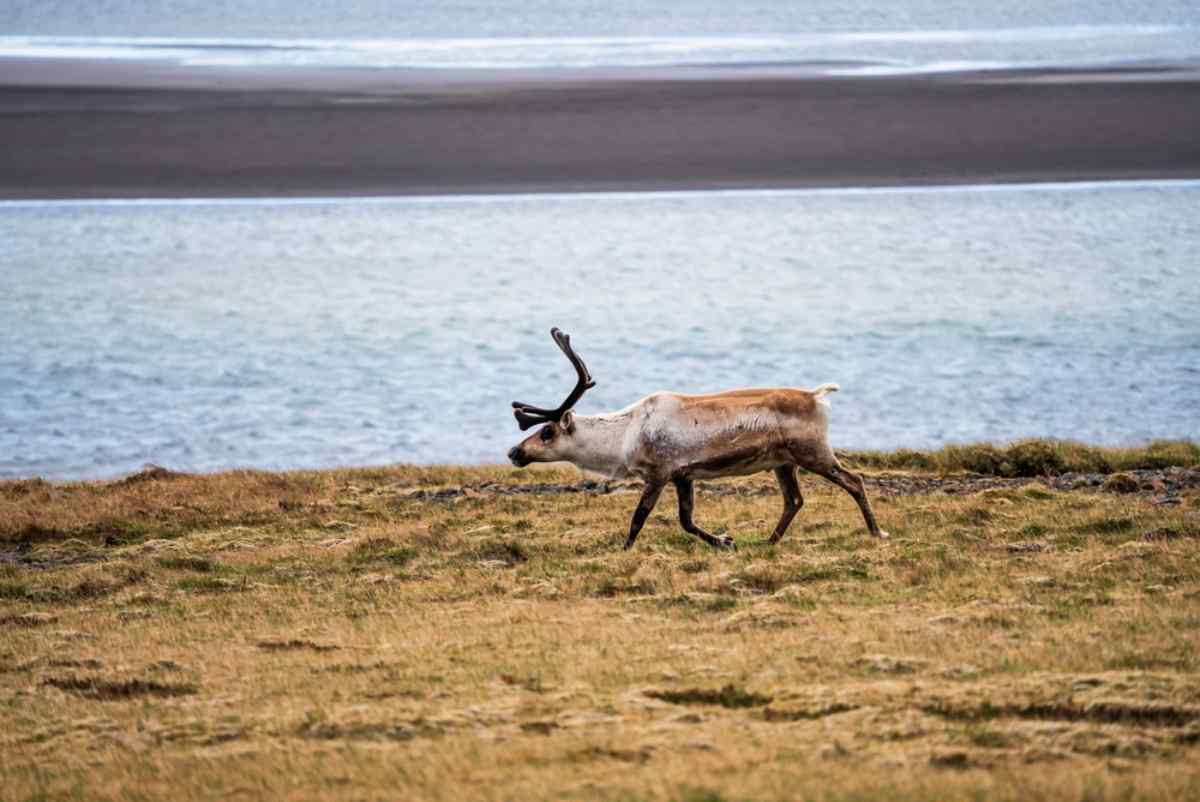
The American mink, a land animal introduced to Iceland in the 1930s, was originally brought over for fur farming. By the 1950s, fur farms had popped up all over the country, with more than 300 in operation. However, these minks didn't stay put. Many escaped into the wild and quickly adapted to Iceland's environment, leading to the rise of a feral population that has since become a serious invasive species.
Minks are highly effective predators and have caused significant harm to Iceland's native wildlife, particularly seabirds. They prey on the eggs and chicks of birds like the eider duck, puffin, and Arctic tern, leading to a troubling decline in these species. In a place where the Arctic fox is the only other native mammalian predator, minks have thrived, disrupting the delicate balance of Iceland's ecosystems. They even compete with Arctic foxes for food, further stressing the local wildlife. In some areas, the presence of minks has led to the disappearance of entire seabird colonies.
To address the growing mink problem, Iceland has introduced control measures like bounty hunting and trapping. These efforts started shortly after the mink was introduced, but inconsistent management across regions has made progress difficult. Despite these challenges, a study on the Snaefellsnes Peninsula showed a 46% drop in the mink population between 2002 and 2006, proving that focused efforts can help protect Iceland's native land animals and their habitats.
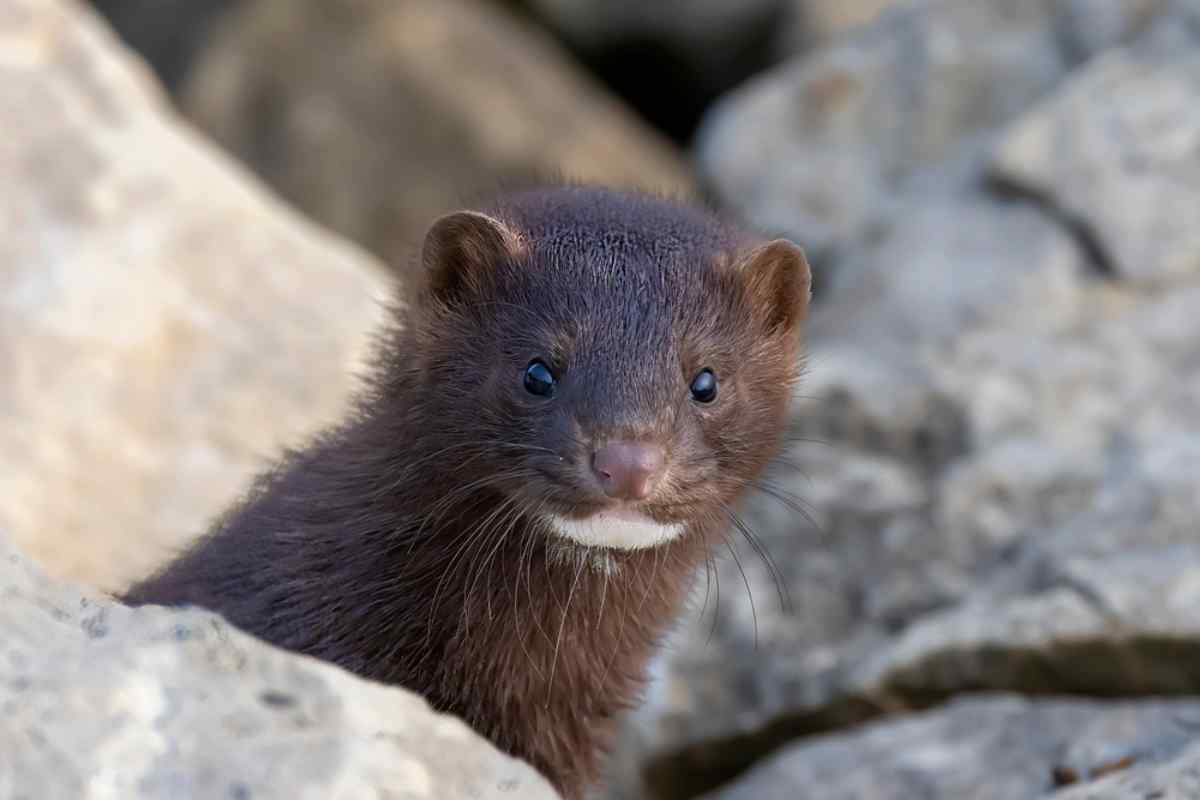
Rodents and rabbits, although not native, have become a notable part of Iceland's animals and plants landscape. The house mouse, introduced in the 10th century, and the brown rat, which arrived through shipping and trade in the 18th century, have both adapted to Iceland's environment. These species are now commonly found in urban areas and on farms across the island. Rabbits, particularly the European rabbit, are another non-native species that have made their mark.
Descended from pets that either escaped or were released, these rabbits have established themselves in specific regions. Rodents, especially, can cause significant problems for farmers. They are notorious for damaging crops and contaminating stored food with their droppings and urine, leading to economic losses. Their burrowing and gnawing can also harm infrastructure, including irrigation systems and buildings. While rabbits are less widespread, they can still have a serious impact on local plant life by grazing on young plants and competing with native herbivores.
Their burrowing can also lead to soil erosion and destabilization of the land. To manage the negative effects of these animals, strategies like trapping and habitat modification are used to keep rodent populations in check. Farmers are also encouraged to maintain clean environments and secure food storage to make their properties less attractive to these pests. Proper management of both rodents and rabbits is essential to safeguarding Iceland's unique ecosystems and agricultural productivity.
What animals live in Iceland that we are proud to call our own? Well, we have quite an impressive array of domestic animals, all bred and raised in Iceland for centuries. Here are some of our biggest and proudest animal exports.
The Icelandic horse is one of the most cherished Icelandic animals, with roots tracing back to the 9th and 10th centuries when Norse settlers brought these sturdy equines to the island. Remarkably, it is the only horse breed in the country, as Iceland has not allowed the importation of horses since the 11th century. Standing between 125-145 cm (12.1-14.2 hands) tall, these small but robust horses have evolved in isolation for over a thousand years, making them one of the purest and most distinct breeds in the world.
What sets the Icelandic horse apart are its five gaits. Alongside the standard walk, trot, and canter/gallop, they possess the smooth tölt and the swift skeið (pace). The tölt is particularly famous for providing an incredibly comfortable ride, so much so that it's said you could 'drink beer while riding and not spill a drop.' Their thick, double-layered coats and hardy nature equip them perfectly for Iceland's often harsh climate. Throughout history, they've been essential for transportation, farming, and sheep herding.
They also hold a special place in Norse mythology and folklore, often regarded as a person's most valuable possession. The image of the Icelandic horse appears on stamps, coins, and countless souvenirs, symbolizing the country's identity. Today, the Icelandic horse continues to be a significant part of life on the island, attracting visitors who wish to explore Iceland's stunning landscapes on horseback. With their friendly demeanor and intelligence, they make excellent companions for riders of all levels.
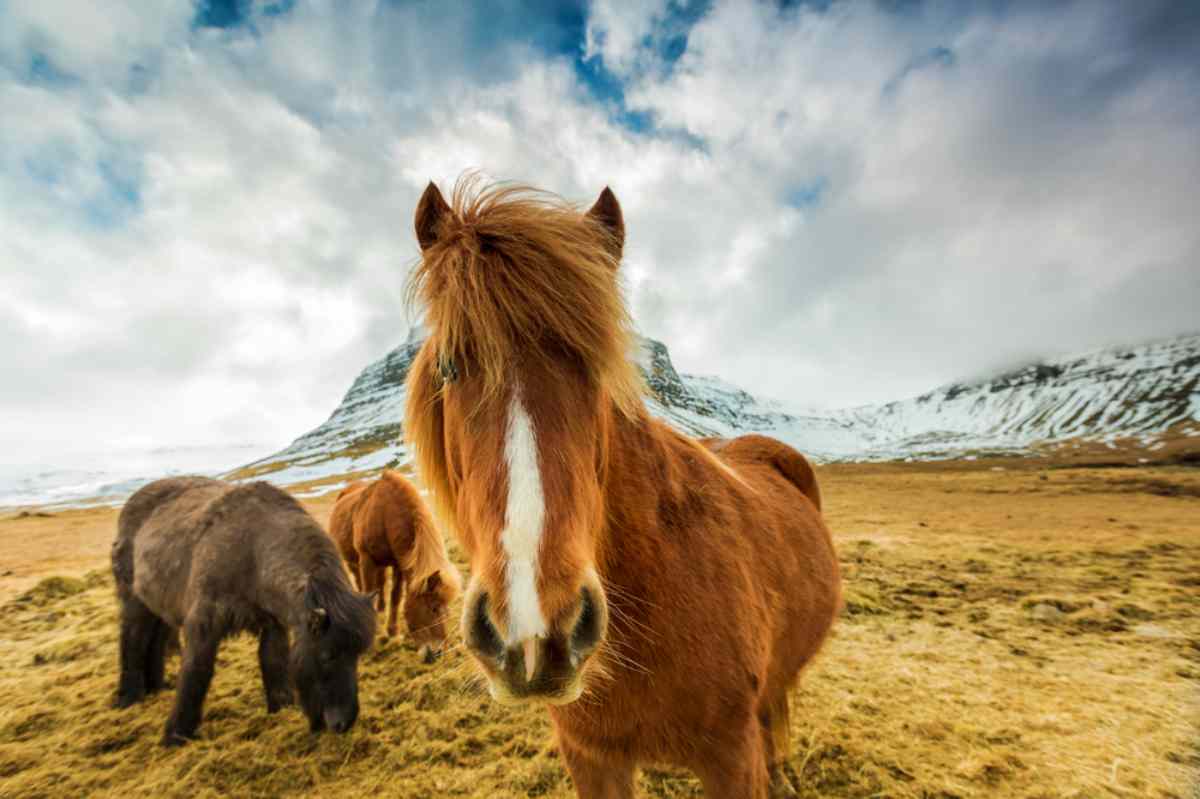
Icelandic sheep are among the most common animals in Iceland, and they play a crucial role in the country's agricultural landscape. Brought to the island by the Vikings over a thousand years ago, these sheep have adapted remarkably well to Iceland's harsh climate and rugged terrain. They are a tri-purpose breed, highly valued for their meat, wool, and milk, which makes them indispensable to sustainable farming practices in Iceland.
These sheep are known for their hardiness and ability to thrive in tough conditions. Typically, Icelandic sheep are bred to lamb as yearlings with impressive reproductive efficiency. Farmers use rotational grazing techniques to keep pastures healthy, moving sheep between different grazing areas to prevent overgrazing and soil erosion. Their efficient digestive systems allow them to survive on minimal feed, making them perfectly suited to Iceland's challenging environment.
The sheep farming industry is a vital part of Iceland's economy, with Icelandic lamb renowned for its exceptional quality, often marketed as a premium product. Beyond their economic importance, sheep are deeply woven into Icelandic culture and heritage. They appear in folklore and are celebrated in traditional events like the annual Þorrablót festival, which includes dishes made from lamb.
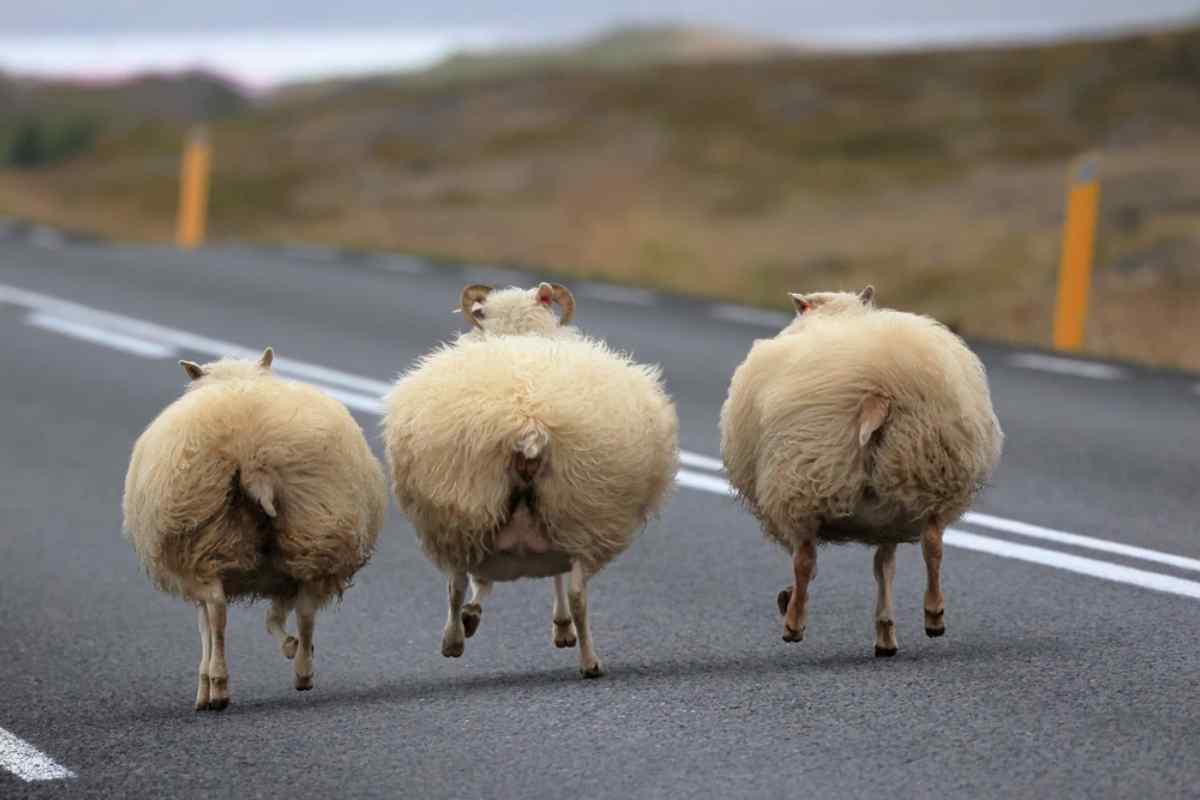
The Icelandic Sheepdog is a remarkable breed, deeply rooted in Iceland's history and culture. These dogs were brought to the island by Viking settlers over a thousand years ago, making them one of Iceland's oldest and most cherished animals. Medium-sized and robust Icelandic Sheepdogs are well-suited to the island's harsh climate thanks to their thick, water-resistant double coat. Their friendly, intelligent, and energetic nature has made them excellent companions and invaluable working dogs.
Traditionally, Icelandic Sheepdogs were essential for herding and protecting livestock, particularly sheep, across Iceland's rugged terrain. Their strong herding instincts and agility allowed them to manage flocks effectively, even in the most challenging landscapes. These dogs were, and still are, a farmer's best friend, capable of guiding sheep through Iceland's diverse environments with ease.
Today, the Icelandic Sheepdog remains an integral part of modern farming practices. They continue to assist farmers during the summer grazing season, and their herding abilities are often showcased in sheepdog trials. Beyond their working role, these dogs are also beloved family pets, known for their loyalty and affectionate nature. The Icelandic Sheepdog truly embodies the spirit of Icelandic culture and tradition, serving as a living link to the country's rich history and rural life.
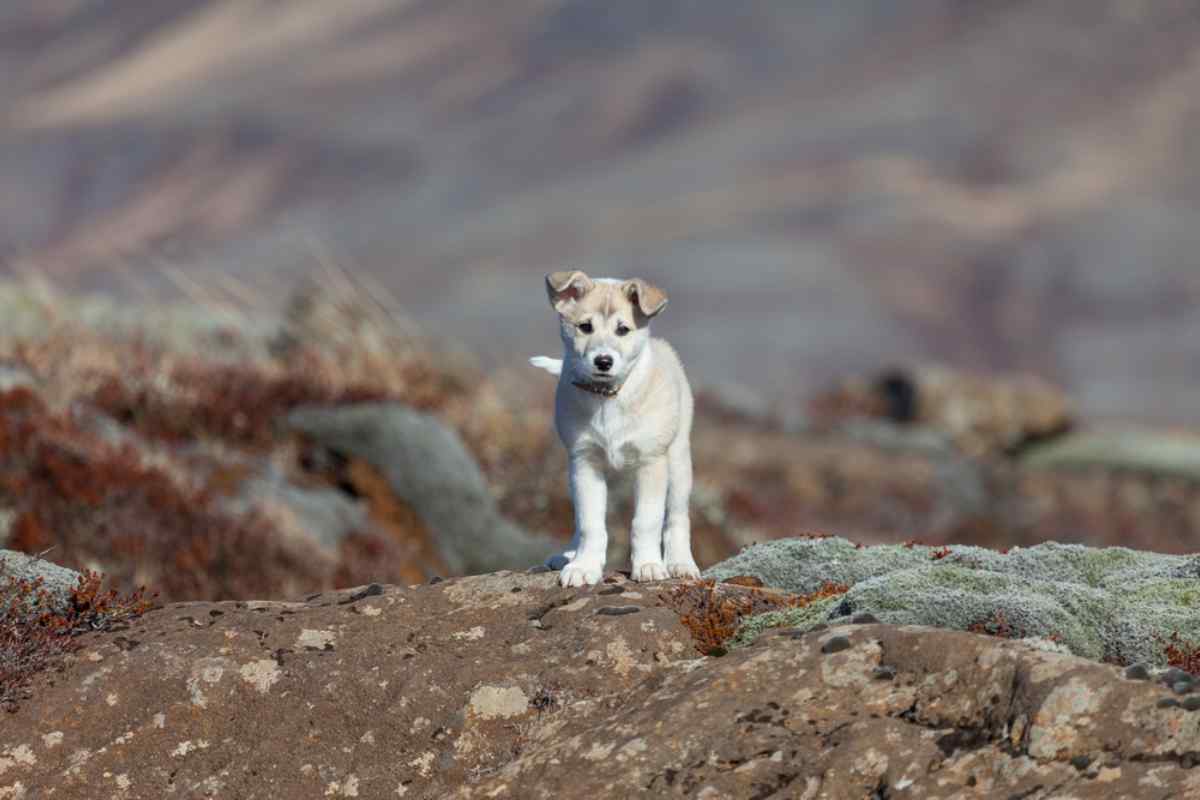
As with any country, Iceland's wildlife is ever-changing, with different species appearing in different seasons. For nature lovers, this means that every visit to the island will bring unique and exciting wildlife experiences. Here are some seasonal highlights of Icelandic wildlife.
When it comes to wildlife viewing in Iceland, the experiences can vary significantly between winter and summer. In the summer months, the long days and milder temperatures create perfect conditions for spotting puffins, whales, and a host of migratory birds enjoying the lush landscapes. On the other hand, winter unveils a magical scene where you might catch a glimpse of the majestic Arctic fox or the enchanting Northern Lights dancing in the starry sky.
The wildlife in Iceland showcases fascinating seasonal behaviors that reflect the rhythms of nature. During spring, many migratory birds return to establish their nests, and you'll witness breathtaking courtship displays among puffins and seabirds.
As summer arrives, it's all about feeding—birds and some mammals take advantage of the abundant food supply, fattening up for the colder months. In the autumn, many species begin their migration southward, seeking warmer climates, while those that stay adapt their feeding habits to the changing landscape.
You will be pleased to know that Iceland takes conservation and environmental protection seriously. The government has implemented strict regulations to protect the country's unique flora and fauna, ensuring sustainable practices for future generations.
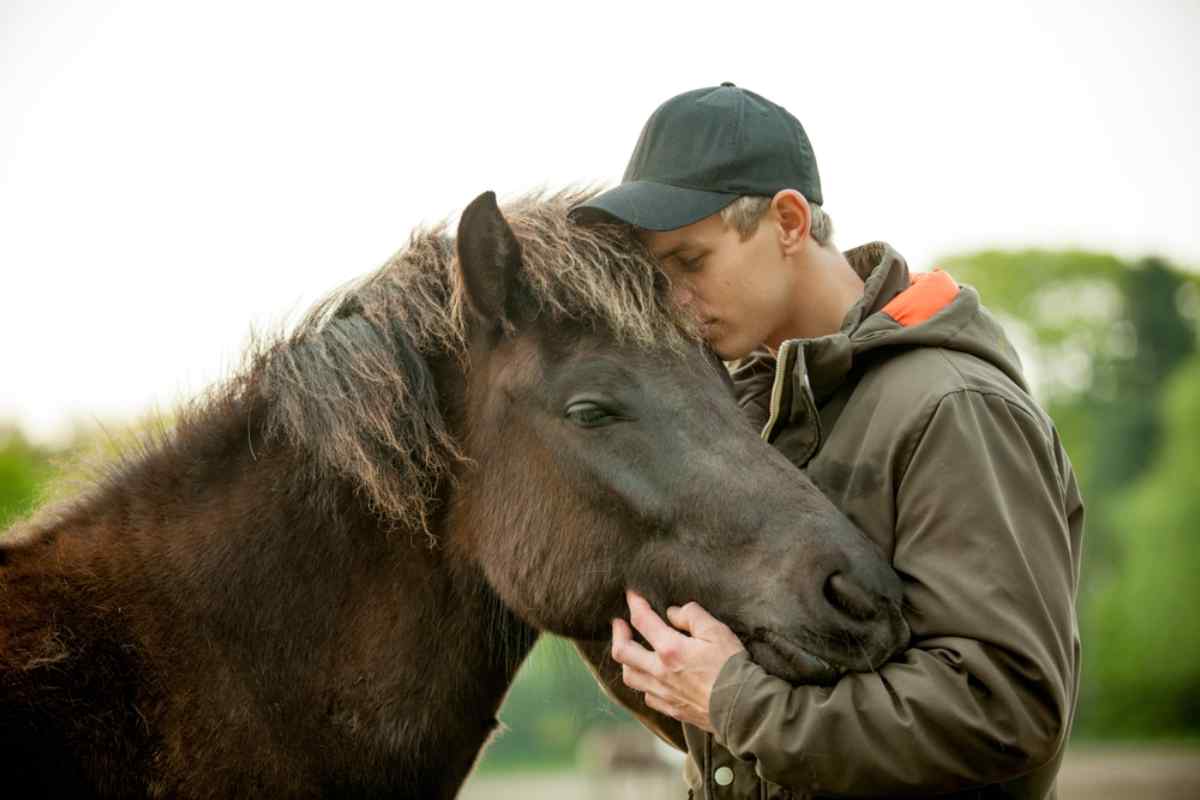
Iceland has an abundance of protected areas and national parks, covering over 20% of the country's landmass. These include:
When visiting Iceland, it's essential to embrace responsible wildlife viewing to protect the environment and its inhabitants. Here are some handy tips for being a considerate visitor that really makes a difference:
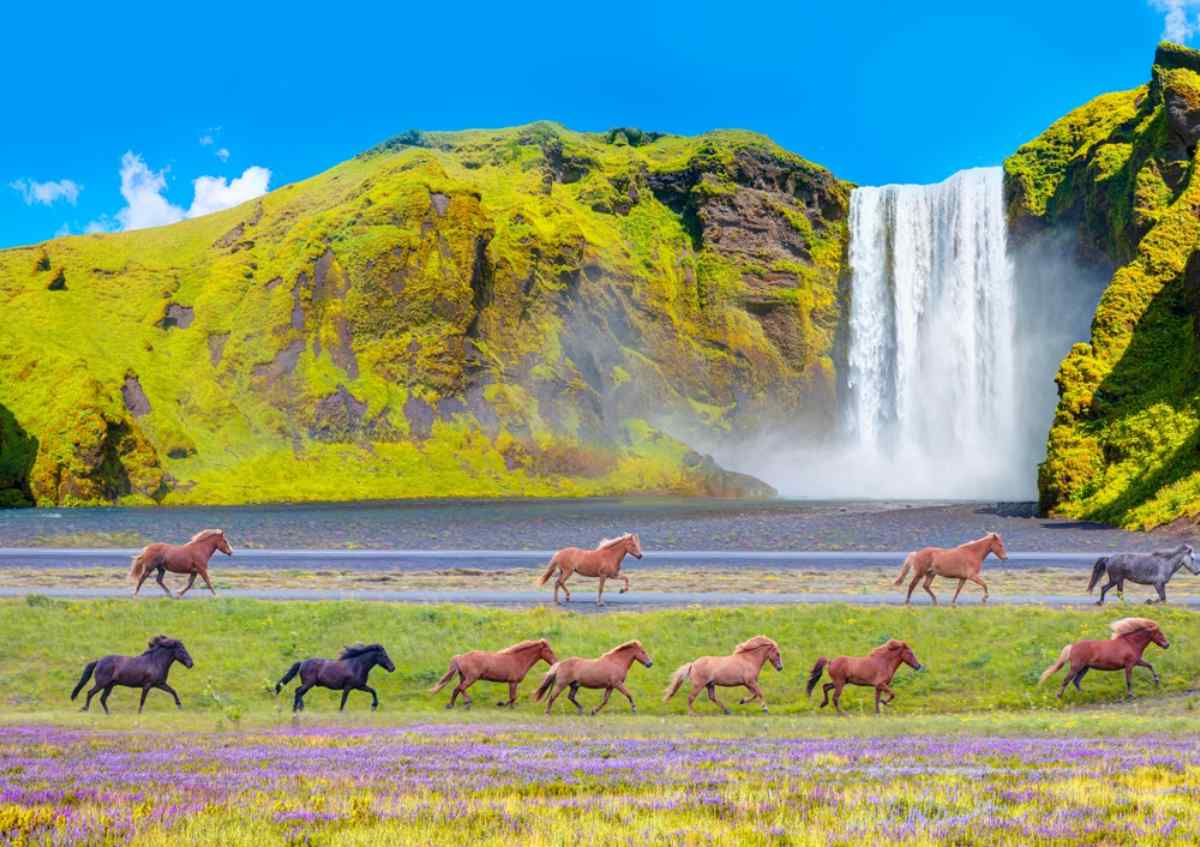
Iceland is largely safe from dangerous animals. There are no snakes or large predators. However, it's essential to keep a safe distance from wildlife and always follow the guidelines for your safety.
Polar bears are not native to Iceland, but occasional sightings can occur if they drift from the Arctic region on ice. However, these instances are rare and unpredictable. They are usually killed on sight by the Icelandic government to protect the public.
Around Iceland, you can spot a variety of marine animals, including majestic whales, playful dolphins, seals, and an array of seabirds that thrive in the rich coastal waters.
Iceland's native animals include the Arctic fox, Icelandic sheep, and various bird species such as the puffin and Gyrfalcon. These unique creatures are well adapted to the island's harsh environment.